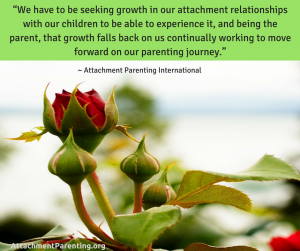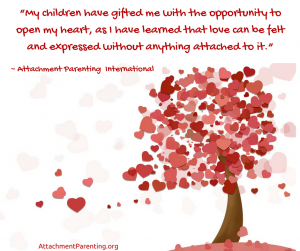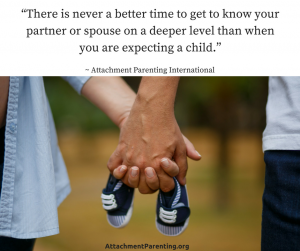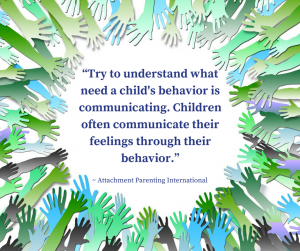Editor’s note: This week, we offer you a 5-part series — originating in The Attached Family online magazine’s “Parenting Without Shame” issue — to help you better understand the development of toxic shame. Part 1 explained how trauma includes 3 components: Fear, Disconnection, and Shame. Part 2 explored Fear. Part 3 defined Disconnection. In this Part 4, we take a look at what it means to become shame-based.
Shame is a visceral and pervasive feeling of being fundamentally flawed and inadequate as a human being.
Shame is primarily relational: Although shame leaves us feeling absolutely alone, its roots lie in an implicit conviction that we are somehow unworthy of having meaningful relationships with other people.
Shame vs Guilt
 Shame is often confused with guilt, but with guilt, we feel bad about things we have done. With shame, we feel bad about who we are.
Shame is often confused with guilt, but with guilt, we feel bad about things we have done. With shame, we feel bad about who we are.
Guilt is about our actions. Shame is about our being.
Shame is mediated by the emotional networks of the brain, so although shame is typically accompanied by self-critical thoughts like “I am stupid/useless/fat/pathetic,” it is ultimately lived as an embodied experience that resides deep beneath our awareness and sucks us into the psychological equivalent of a black hole.
When Shame Becomes Toxic
Shame is a product of evolution, and it is experienced as a passing emotion in almost everybody. It exists to tell us that we are at risk of losing important social relationships, or that we might be thrown out of our group.
However, if we’ve been traumatized, then shame becomes indelibly interwoven with our implicit sense of who we are, whereupon our identity becomes “shame-based.”
There are several routes to becoming shame-based:
- Shame can originate outside of us — When we are made to feel inadequate by our family, caregivers, teachers, peers, culture, or socio-political environment, we absorb that shame and make it our own. In this case, being shamed constitutes the original painful and frightening experience around which our trauma-world is built.
- Human infants need sensitive and responsive nurturing from caregivers — When this need is not met, children develop an embodied and nonverbal sense of being inadequate. They also develop an embodied and nonverbal sense of inadequacy around their actual need for nurturing — implicitly feeling that there must be something wrong with them for having the needs.
- Shame can originate inside us as a response to more overt traumatizing experiences — Painful and frightening experiences occur that have nothing to do with being shamed. However, we have evolved a need to understand why these things have happened to us, and for various reasons, we tend to believe that we are at fault. For example, children whose parents divorce commonly feel that if they had been “better,” their parents would have stayed together.
- Once we’ve entered a trauma-world, shame can be created in response to our own behavior — There are times when we know we are over-reacting. However, because we aren’t aware that our fear system is hyper-sensitive, we take our behavior as evidence of our own supposed inadequacy. In addition, when we bury parts of ourselves in order to make ourselves acceptable to others, we implicitly sense that we are being inauthentic, which in turn creates shame.
Irrespective of how our shame originates, once we’ve become shame-based, we can’t recognize shame for what it is. Thus, we see ourselves through a distorted lens. As a result, we are likely to experience ourselves as contemptible and feel a victim to our own believed inadequacy.
What Doesn’t Work to Heal Shame
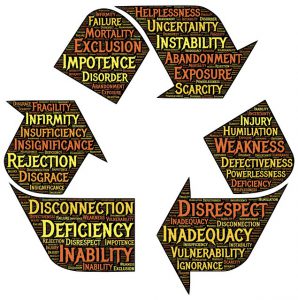 In this state, we get sucked into a downward spiral of shame. We can become even more desperate to obliterate the parts of ourselves that we believe make us inadequate, redoubling our efforts to shame those parts into submission. However, when we use shame against ourselves, we retraumatize ourselves. Then, instead of fostering change, we reinforce the status quo and fortify the walls of our trauma-world.
In this state, we get sucked into a downward spiral of shame. We can become even more desperate to obliterate the parts of ourselves that we believe make us inadequate, redoubling our efforts to shame those parts into submission. However, when we use shame against ourselves, we retraumatize ourselves. Then, instead of fostering change, we reinforce the status quo and fortify the walls of our trauma-world.
At the same time, we try to cajole ourselves into success, believing that if we can force ourselves to become more than we are — or ideally perfect — then the gnawing pain of being shame-based will abate. However, if we are shame-based, then no amount of success will be enough. No matter what we do, we are never enough.
Being shame-based doesn’t only poison our relationship with ourselves, it also poisons our relationships with others. When we are shame-based, we will be terrified that if others get to know us, they will see us as the inadequate person we believe ourselves to be. In an unconscious attempt to prevent that from happening, we may put up barriers, push people away, and sabotage relationships. Alternatively, we may try to control others, hoping that we can prevent them from doing anything that might bring our shame to the surface.
We are generally not conscious of what we are doing, or indeed why we are doing it. However, we are left with a murky feeling that our relationships lack authenticity, trust, and intimacy. As a result, we feel increasingly isolated.
Also, because human beings are such a profoundly social species, when we don’t have meaningful relationships, we feel sub-human, and that, in turn, exacerbates our shame.
In short, shame creates more shame. Shame also generates isolation and fear. And shame reinforces the need to disconnect. Ultimately, shame keeps us locked in our trauma-worlds.
Tomorrow, in Part 4, we’ll explore what does work in healing shame
Photo sources: Pixabay.com


